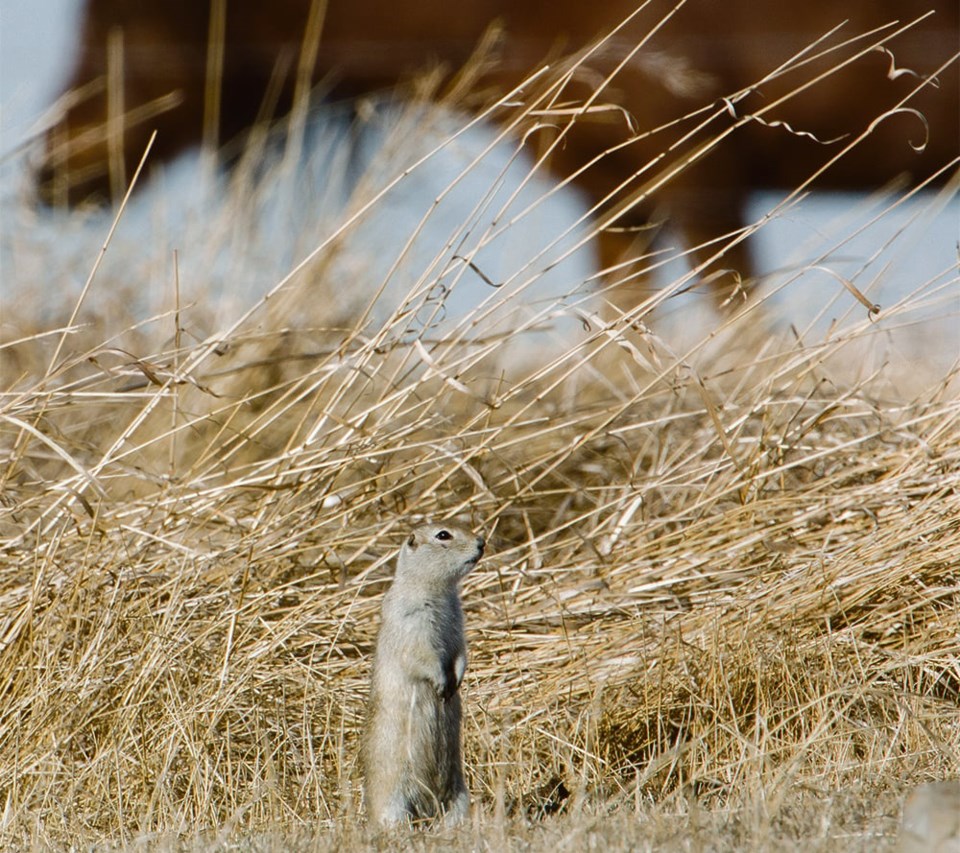WESTERN PRODUCER — Liquid strychnine is no longer available to control gophers, but a study last year found a promising cost-effective alternative.
James Tansey, Saskatchewan’s insect and vertebrate pest management specialist, said all the registered products in the study worked, but based on the data, he recommended those containing zinc phosphide.
“I think you’re going to get better efficacy, it’s going to cost you less and there is lower risk of non-target poisoning,” he said.
Specifically, his work conducted in the Rural Municipality of Maple Creek in Saskatchewan and in the Municipal District of Willow Creek in Alberta compared strychnine versus two zinc phosphide products, Burrow Oat Bait and ZP Rodent Oat Bait AG, and two anticoagulants, Rozol RTU and Ramik Green.
Tansey said a similar study was done in 2019 and is 小蓝视频 done again this year. In 2019, the only non-target deaths were deer mice and in 2022, there were none.
Zinc phosphide is highly toxic — about one kilogram would kill a 1,200-pound cow — and it’s important to put it down the hole into the burrow. The product works by turning into phosphene gas in the stomach and that leads to rapid organ failure. The gas then dissipates so there is little residue and the opportunity for non-target poisoning is reduced, said Tansey.
The zinc phosphide products are preferable because they only have to be put down once and, like strychnine, there is no antidote.
The anticoagulant baits require fairly precise timing because the antidote to them is vitamin K, and that can be found in fresh plant material, especially legumes such as alfalfa. These products also remain in muscle tissue and can cause secondary poisoning.
The best time to place bait is from March 15 to April 30, although this year’s cool wet conditions have extended that slightly.
Tansey said putting out bait in July won’t control the reproductive females, which is the target population.
Adult gophers, more formally known as Richardson’s ground squirrels, are only above ground for about four months of the year. The males appear about two weeks before the females and the females will stay active until early July before entering a state of torpor underground.
“Typically if you’re seeing them late season, September, October, these are going to be the equivalent of teenage boys and they’re engaging in all the silliness that teenage boys engage in,” Tansey said. “They’re typically not going to contribute very much to the next generation.”
The females have only one litter of about five to eight each year. The gestation period is 23 days.
Females are only receptive to the males for about four hours each spring. Tansey said that’s why fighting between males can be brutal. Each male will mate with about 10 females and not a lot of males are required, given the short breeding time.
Tansey said the females are territorial and will drive the males out to reduce potential inbreeding. Many of the rodents seen along the roads in June and July are males looking for new homes.
Although prairie farmers argued loud and long for strychnine to be retained, Tansey said natural control methods such as badgers or raptors can do a good job.
Badgers can reduce a population by 60 to 80 percent, especially if they get into a burrow while the ground squirrels are in torpor.
“I realize people don’t like the damage badgers cause,” said Tansey, but if they can cope with that, the natural predator does a good job.
“Even relatively small birds of prey can take down juvenile gophers, like small owls, falcons,” he said, adding that foxes, coyotes and wolves also eat them.
Badgers have large ranges of between 30 and 50 sq. kilometres, said Brad Downey, a biologist with the Alberta Conservation Association. He, too, said they can eat a lot of gophers in an area but leave a big mess.
“If you are tolerant of them and they can get into some of your pasture areas, they can eat up to 50 percent of the local ground squirrels in that area,” he said.
Long-tailed weasels will eat the same amount of juvenile gophers if farmers have the mixed habitat of riparian, shrubby and shorter grass they need.
In badland areas, rattlesnakes and bull snakes are good predators.
A pair of ferruginous hawks, an endangered species, can eat 400 to 500 gophers during nesting season, Downey said.
They will eat even more once the young are out of their nests.
Downey said shooting gophers only really works if done in February and March.
“If you’re waiting until April or later you’re probably going to see a population increase five or six times that amount and that’s because three-quarters of the population are females,” he said.
Tansey added that smaller populations could be controlled by shooting, trapping or drowning, but these are labour intensive and shooting leaves a lot of lead in the environment.
The Saskatchewan government and the Saskatchewan Association of Rural Municipalities are working together to roll out a new gopher control program.
Assistant deputy minister Lee Auten, during examination of agriculture ministry estimates, said producers would apply to SARM for a 50 percent rebate. Details are expected soon.




